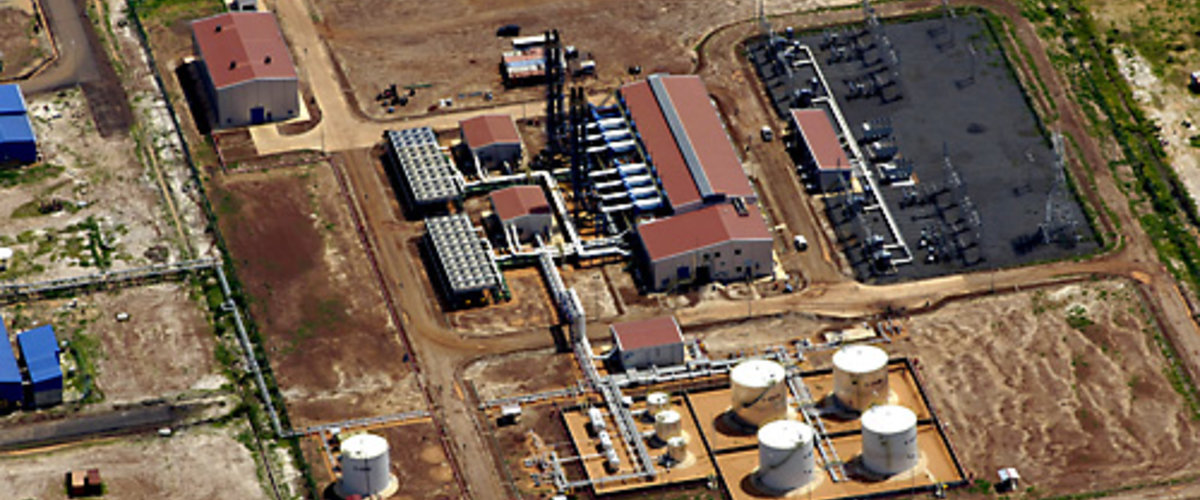Closure of UNMIS
UNMIS wound up its operations on 9 July 2011 with the completion of the interim period agreed on by the Government of Sudan and Sudan People’s Liberation Movement in the Comprehensive Peace Agreement (CPA), signed on 9 January 2005.
The mission ended its six years of mandated operations the same day South Sudan declared independence, following a CPA-provided referendum on 9 January 2011 that voted overwhelmingly in favour of secession.
In support of the new nation, the Security Council established a successor mission to UNMIS – the UN Mission in South Sudan (UNMISS) – on 9 July for an initial period of one year, with the intention to renew for further periods as required.
1 Feb
2011
As the Government of Southern Sudan (GoSS) enters the final six months of the interim period of the 2005 Comprehensive Peace Agreement (CPA), the future of oil, its largest revenue earner, remains uncertain.
Management of the sector has been the exclusive domain of the central government in Khartoum in the past. But if Southern Sudanese voters decide to secede from the rest of the country in this month's referendum, the GoSS will need to develop, as part of post referendum arrangements, a comprehensive and legally sound management plan for the industry, foster a favourable environment for foreign investment and demonstrate adherence to international standards.
Highly profitable
Oil was discovered in Sudan in 1978, but the outbreak of the country's second civil war five years later delayed production until 1999, when the first 1,500 barrels of crude oil were pumped through a pipeline to a marine export terminal on the Red Sea.
Production climbed sharply over the ensuing six years and hit the 355,000 barrels per day (b/d) mark in 2005.
The industry continued to grow steadily throughout the CPA era. According to a monograph issued by the European Coalition on Oil in Sudan (ECOS) at a conference on the oil industry that was held in Juba in December 2010, the 457,000 b/d production levels registered in 2007 rose to 514,000 b/d during the first six months of last year.
ECOS Coordinator Egbert Wesselink described the industry's profitability to date as "extremely high" at the conference entitled "Sudan's Oil Industry after the Referendum." The sector's annual revenues peaked at $11.1 billion in 2008.
A 2009 report by Business Monitor International forecast a robust increase in production in the foreseeable future to an average of 771,000 b/d by 2013.
But Mr. Wesselink differed with that bullish outlook at the Juba conference. He said that rising oil production levels are showing signs of flattening out, a medium-term trend blamed on falling output in the industry's older oil fields and declining rates of investment in the sector.
An April 2008 ECOS publication predicted that oil production would fall below the 500,000 b/d threshold in 2012 and would continue its downward spiral over the ensuing four years.
The semi-autonomous GoSS depends on oil revenues for between 93 and 98 per cent of its annual budget, and no alternative sources of hard currency are in the offing to cushion a plunge in oil-derived income.
Mr. Wesselink warned that no relief could be expected, even if people of the disputed Abyei area opted to join Southern Sudan in their upcoming referendum.
"If you look at Abyei within the boundaries set by the Permanent Court of Arbitration (in July 2009), there is only one field there," he said. "There is always a chance there could be more oil. But we are expecting production to be completely phased out within six years."
Post Referendum arrangements
The Undersecretary of the GoSS Ministry of Energy and Mining David Loro Gubek said the regional government is currently drafting an oil and gas policy that would address compensation and environmental issues as well as community interests.
In December 2010, the CPA parties agreed to maintain the flow of oil until 9 July 2011 when the peace agreement's interim period ends. They also agreed to entrust the security of oil company assets and personnel to Joint Integrated Units (JIUs) consisting of troops belonging to the Sudan Armed Forces and the Sudan People's Liberation Army.
But that would have to change in the event of separation because the JIUs would be disbanded under the terms of the CPA.
In order to build capacity within its own ranks, the GoSS Energy and Mining Ministry has sent 37 staff members to Southern Sudan's oil-producing states in order to familiarize themselves with industry operations in the field. In October, some officials also visited China, which is by far the largest customer of Sudanese oil exports.
Social and environmental management consultant Jill Shankleman said that the Sudan oil sector would also need to upgrade its operations to meet current international standards.
Adherence to existing international standards such as the Extractive Industries Transparency Initiative (EITI) and the Natural Resource Charter are a prerequisite for attracting more foreign investment, she added.
 UN
UN United Nations Peacekeeping
United Nations Peacekeeping





